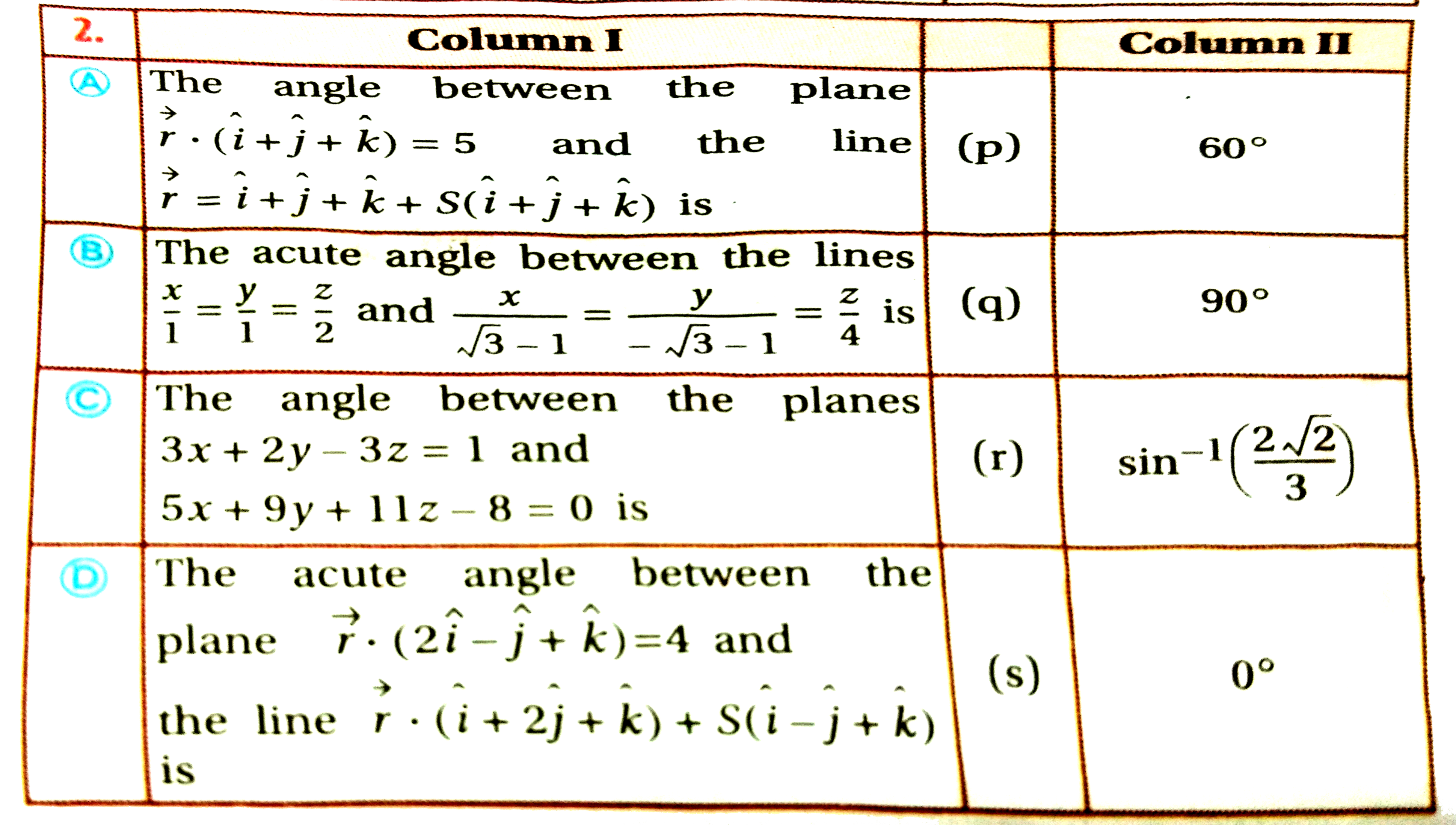The plane passing through the point (−2,−2,2) and containing the line joining the points (1,1,1,) and (1,−1,2) make intersepts of lengths a,b,c respectively on the axes of x , y and z respectively, then __Solution in Bengali
a=3b
b=2c
a+b+c=12
a+2b+2c=0
The correct Answer is:A, B, C
Step by step video, text & image solution for The plane passing through the point (-2,-2,2) and containing the line joining the points (1,1,1,) and (1,-1,2) make intersepts of lengths a,b,c respectively on the axes of x , y and z respectively, then __ by Maths experts to help you in doubts & scoring excellent marks in Class 12 exams.
Topper's Solved these Questions
- BOOK - CHHAYA PUBLICATIONCHAPTER - PLANE EXERCISE - Sample Question for Competitive Examination( B Integer Answer Type )5videos
PLANE
- BOOK - CHHAYA PUBLICATIONCHAPTER - PLANE EXERCISE - Sample Question for Competitive Examination( C Matrix Match Type )1videos
PLANE
- BOOK - CHHAYA PUBLICATIONCHAPTER - PLANE EXERCISE - EXERCISE 5 B ( Short question)11videos
PLANE
- BOOK - CHHAYA PUBLICATIONCHAPTER - PERMUTATION AND COMBINATION EXERCISE - Sample Questions for Competitive Exams E Assertion -Reason Type2videos
PERMUTATION AND COMBINATION
- BOOK - CHHAYA PUBLICATIONCHAPTER - PROBABILITYEXERCISE - SAMPLE QUESTIONS FOR COMPETITIVE EXAMS18videos
PROBABILITY
Similar Questions
If the distance between the plane x−2y+z=d and the plane containing the lines x−12=y−23=z−34 and x−23=y−34=z−45is√6 , then |d| is __
04:50View SolutionMatch the following Column I and Column II
 05:19View Solution
05:19View SolutionFind the coordinates of the point where the line through the points A(3,4,1)andB(5,1,6) acrosses the xy-plane .
07:40View SolutionStatement -I : Number of terms in the expansion of (x+y+z+w)50 is .53C3.
Statement -II : Number of non- negative solution of the equation p+q+r+s=50 is .53C3.09:15View SolutionIf A and B are two independent events of a random experiment and P(A)=12/,P(B)=15, then -
05:55View SolutionThe plane passing through the point (-2,-2,2) and containing the line joining the points (1,1,1) and (1,-1,2) makes intercepts on the co-ordinates axes,the sum of whose length is
07:21View Solutionthe mirror image of point (3,1,7) with respect to the plane x-y+z=3 is P .then equation plane which is passes through the point P and contains the line (x)/(1)=(y)/(2)=(z)/(1)
07:34View SolutionThe coplanar points A,B,C,D are (2−x,2,2),(2,2−y,2),(2,2,2−z) and (1,1,1) respectively then
03:04View SolutionThe plane passing through the point (-2, -2, -3)
and containing the line joining the points (1, 1, 1)
and (1, -1, 2) makes an intercept a, b, c along x,
y and z axis respectively, then 1a+1b+1c will be01:40View Solutionबिन्दुओ (-2,-2,2),(1,1,1) और (1,-1,2) से होकर जाने वाले समतल का समीकरण ज्ञात कीजिये
02:58View SolutionThe sum of the intercepts on the coordinate axes of the plane passing through the point (−2,−2,2) and containing the line joining the points (1,−1,2)and(1,1,1), is :
06:38View SolutionA plane is making intercepts 2,3,4 on X, Y and ,Z-axes respectively. Another plane is passing through the point (-1,6,2) and is perpendicular to the line joining the points (1,2,3) and (-2,3,4). Then angle between the two planes is
04:09View Solutionthe mirror image of point (3,1,7) with respect to the plane x−y+z=3 is P. then equation plane which is passes through the point P and contains the line x1=y2=z1.
04:28View SolutionThe coplanar points A,B,C,D are (2−x,2,2),(2,2−y,2),(2,2,2−z) and (1,1,1) respectively then
08:10View SolutionThe plane passing through the point (-2, -2, -3)
and containing the line joining the points (1, 1, 1)
and (1, -1, 2) makes an intercept a, b, c along x,
y and z axis respectively, then 1a+1b+1c will be06:25View SolutionThe sum of the intercepts on the coordinate axes of the plane passing through the point (−2,−2,2) and containing the line joining the points (1,−1,2)and(1,1,1), is :
05:57View Solution

